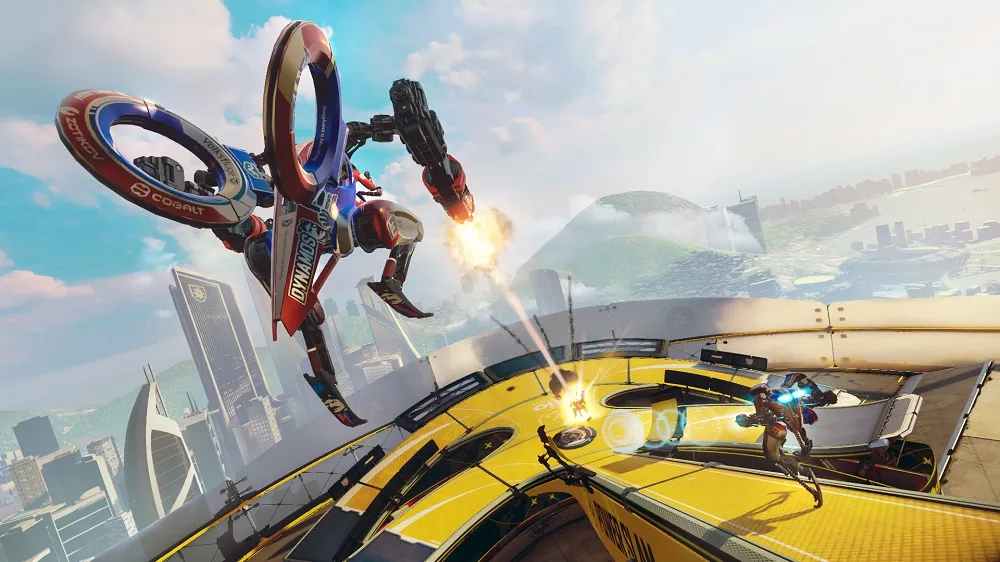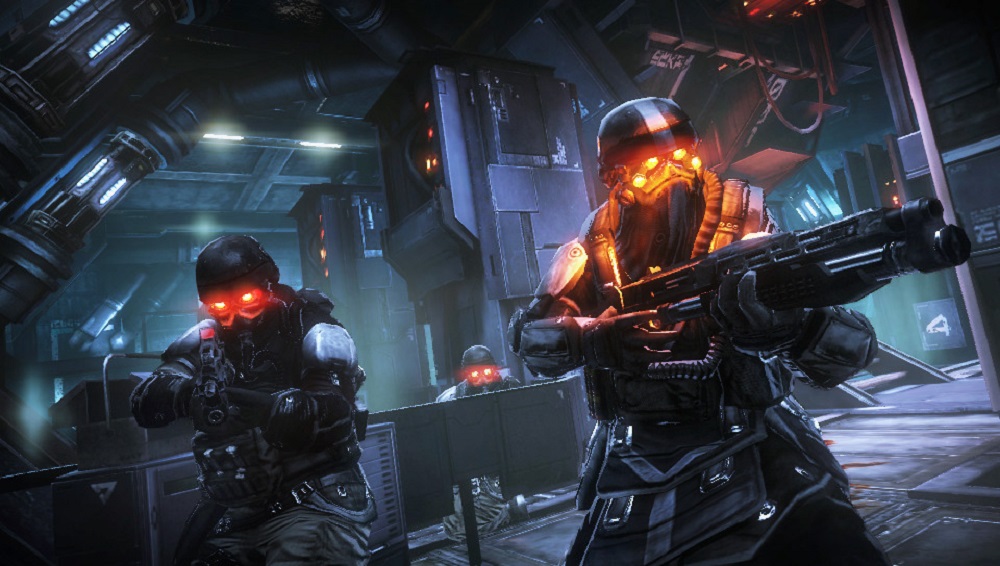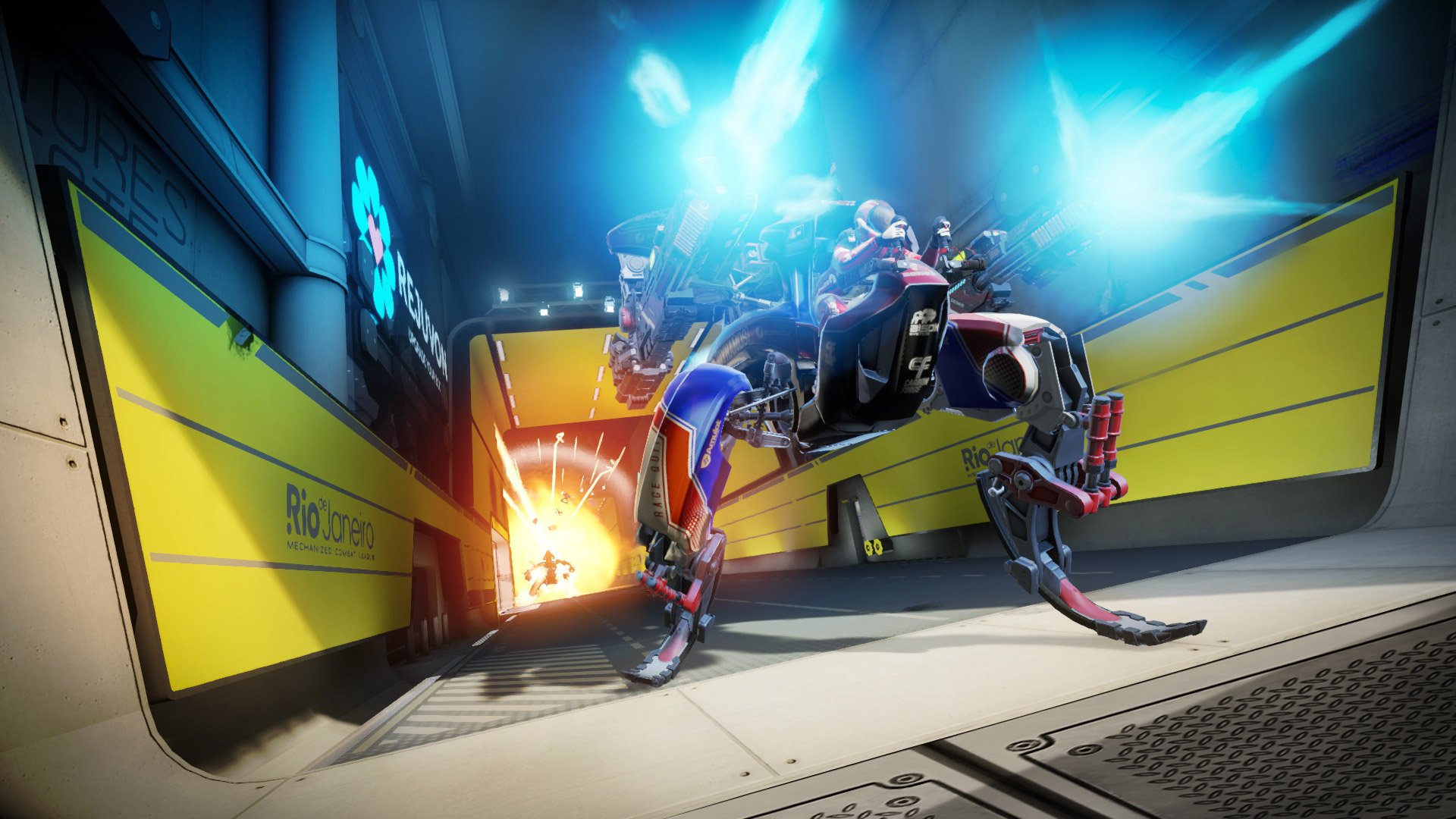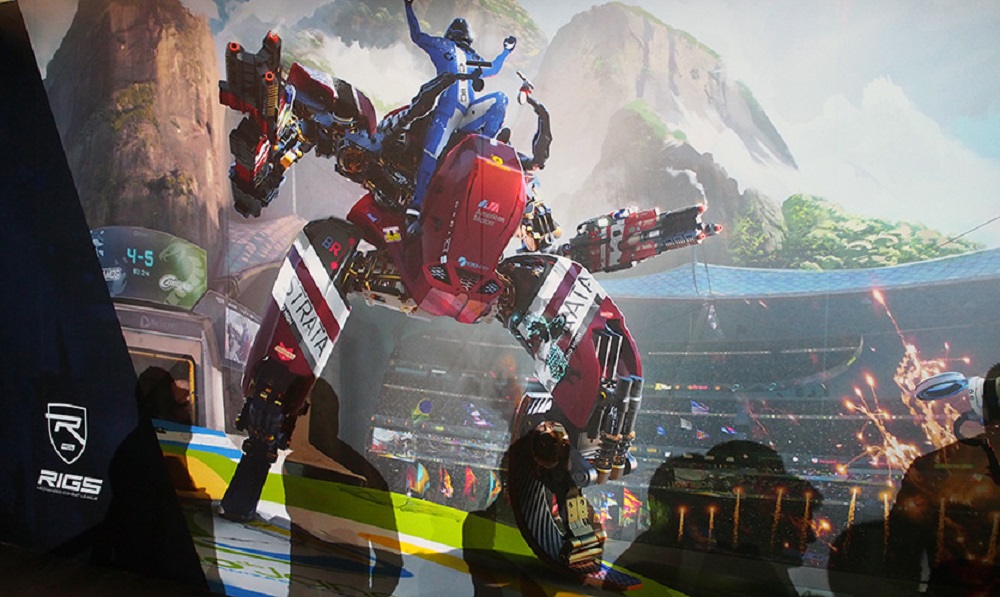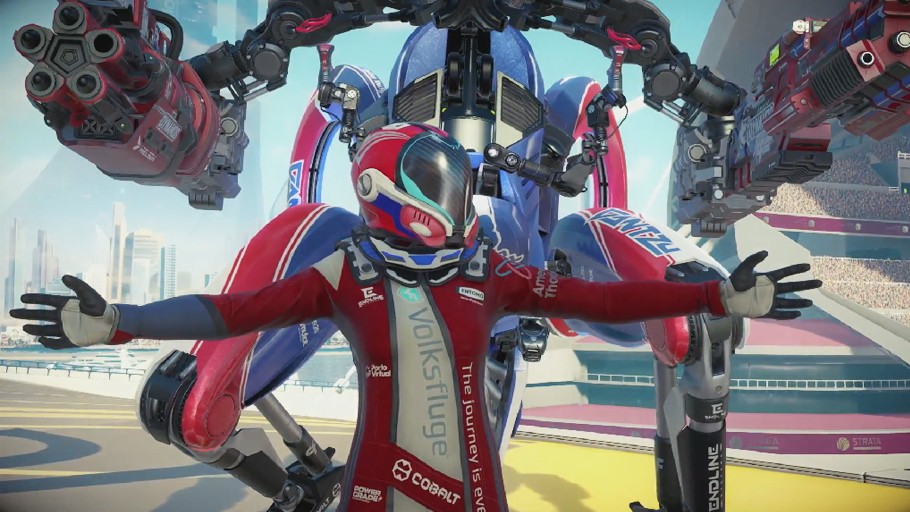Sony’s PlayStation VR headset has plenty of competition in front it. The already well-established Oculus Rift and HTC Vive, and new companies joining the VR craze like Google with their own newly-announced platforms, will all be vying for people’s attention and money. PlayStation has to stand out, and convince its large fan base that VR is different from the company’s past (and failed) efforts such as the PlayStation Move. The best way to quickly establish the PSVR is through software. It needs to have a strong launch lineup, and RIGS is looking likely to be the headliner this fall.
RIGS: Mechanized Combat League combines two disparate ideas — sports and mech shooters — for a frenetic, competitive, multiplayer VR game that blew us away when we played it last at GDC 2016. Played from a first-person perspective, each player enters a handful of different arenas with one goal in mind — overloading their mechs in order to score points. Two teams of three have to collect orbs to overload, while punching and shooting their opponents. Once in overload mode, you’ve to throw yourself through a large ring that always hovers above every level.
The concept is simple, but clever. RIGS has the potential to be an eSports and VR hit right off the gate.
Without Killzone, There Is No RIGS
The mastermind behind the title is Guerrilla Cambridge, one of PlayStation’s first-party studios. Though not as well known as some of the other high-profile Sony-owned devs, like Naughty Dog and Sucker Punch, Cambridge has been around since 1997. It made colorful and eccentric platformers, like Frogger and MediEvil for the PlayStation 1, before finally moving on to the darker Killzone franchise. The studio is familiar with developing console and handheld games, but that doesn’t mean it had an easy time diving into VR.
“Some things such as our code base and tool set, which we’ve been using for some time, are very familiar to us,” says Piers Jackson, Guerrilla Cambridge’s Game Director and Studio Manager. “However I think it’s safe to say that the moment we moved everything into VR we had a steep learning curve, and it was probably steeper than we were expecting. Many of the things we’d normally do in games just aren’t possible or practical in VR, so we’ve had to come up with novel solutions to these problems.
“For instance one thing that you have to be very mindful about when developing for VR is performance. Frame rate is king and this is constantly a challenge when you’re trying to push both the visuals and gameplay as hard as we do. As a studio we’ve faced these challenges before; both Killzone: Mercenary and Little Big Planet PSP provided an experience very similar to a full console game on a handheld system with less power.”
The potential of VR was too enticing for the studio to ignore. It wants to create a game you can easily get lost in, while also having as much fun as playing Killzone. However, Jackson and the rest of the studio knew they had a herculean task ahead of them with RIGS. A multitude of different challenges, from nailing comfortability to even the simplest things, like not being able to use objective markers, kept cropping up.
“We identified very early on that we’d need to create the game entirely in-body from the player’s perspective,” says Jackson, talking about some of these obstacles. “Doing this creates some interesting challenges when you need to move them from one location to another outside of their control, such as when you get into a RIG. We also found that as a consequence we needed to make our entire menu system in a virtual room space with the options embedded into the environment. The positive from this is that our user interface is significantly more engaging and impressive than you might expect from an FPS.”
RIGS’ development was made a bit easier because of Cambridge’s recent work on Killzone: Mercenary. According to Jackson, it would have been impossible and grueling to make RIGS if Cambridge never got involved with Killzone right before. The learning curve to create a first-person shooter is steep and difficult on its own. Adding VR on top of that would’ve sunk RIGS, and Cambridge alongside it. Just the simple task of creating guns and balancing them came straight from Mercenary. However, other aspects had to be slightly reworked for VR.
“Other elements of gunplay turned out to be quite different,” says Jackson. “The use of a targeting reticule can be quite awkward because it sits at a different depth to the target, which can be quite hard for your eyes to focus on. It also means that if you don’t line yourself up with it correctly, your bullets don’t go where you expect them to. In our case we found that using targeting lasers worked much better as it shows you the trajectory of your projectiles, and highlights the exact impact point in the 3D scene.
“With cameras we’ve pretty much had to start from scratch. We found out very early on that the player’s head is the camera and you cannot take control of it at any point. This rules out the classic FPS trope of jumping from a helicopter and hitting the ground with a fully animated camera. It looks great on TV but is not a good experience in VR.”
eSports, Here We Come!
Since RIGS is multiplayer-centric, another point of concern are the load times. Waiting too long for online matches to start isn’t an option. According to Jackson, there was pressure to nail this aspect from the start. However, the studio found having fairly short matches alleviates this problem. You’re in and out of games without having to spend unnecessary extra minutes wearing the headset.
As for RIGS’ potential in the eSports scene, Jackson agrees it could be the first VR game to succeed on that front for a few reasons.
“I think the fact that it does feel like a completely new experience, and is fun to play both competitively and socially is what will help it to succeed in paving a VR multiplayer scene,” says Jackson. “Regarding the more competitive aspects of the game, as far as I’m concerned the game is absolutely at its best when played in teams using comms, which should appeal to gaming clans. eSports is a scene that you need to be invited into and requires a certain amount of critical mass in your player base to take off. However, the game is a lot of fun to watch which is something we’ve been deliberately focusing on.”
The goal to create a VR game that’s thrilling to play, but also enjoyable to watch for passive viewers is one of the main ways how Cambridge came up with the idea for RIGS. After coming off of Killzone: Mercenary’s critical success, which is considered by many to be one of the best PlayStation Vita games around, the studio wanted to make another first-person shooter. The concept of turning a multiplayer shooter into a full-blown sports game came up in a random brainstorming session a few years ago. Cambridge wanted to take the contrived rules found in online gaming, and make them feel natural in a sports setting.
The rapid rise of eSports was also a huge influence on RIGS’ design and concept, and the studio knew it needed to capitalize on it and deliver a product made for eSports. The idea to bring in mechs came right offer.
“We knew that the use of a cockpit provided a lot of stability to the player’s experience and could also protect their characters from actual physical damage, which is pretty important in a sport,” says Jackson. “At the time we didn’t know what that would feel like in VR, so we decided to create the RIGS as a physical extension of the player and given that we were making you a sports star it seemed odd to allow you to be actually hurt – we went for ejection instead.
“The fact that they had to be athletic, fast, and sporty frankly determined what they looked like from their liveries to stripped back lightweight structure, we definitely didn’t want them to look like typical clunky mechs.”
We’ll find out for sure whether Cambridge captured the feeling of controlling a swift and powerful mech when it releases later this fall. You can read more about the game from our hands-on preview at GDC 2016.
—
Article contributed by Alex Gilyadov. Alex is a freelance writer with work appearing in multiple publications, such as GameSpot, VICE, Playboy, Polygon, and more. You can follow him on Twitter: @rparampampam.

